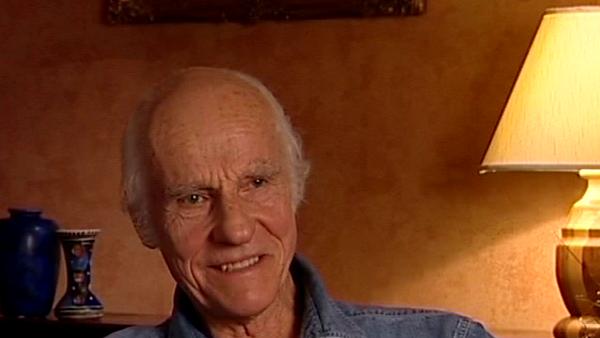NEXT STORY

Comparing old and modern post-production techniques
RELATED STORIES

NEXT STORY

Comparing old and modern post-production techniques
RELATED STORIES



In this scene, which I've described previously where they walk through the forest, and we're on a 400mm lens, panning with them as they walk in a semicircle... the reason why they walk... why we designed it that way was that we could maintain a close shot without tracking. It looks as if you're tracking because they're so close together and they're so far away on the long lens, and by walking in a semicircle their configuration... their relationship to each other remains the same. Alan Bates is on the right looking ahead and Jennie Linden is slightly in front of him looking back, and that relationship is main... retained throughout the length of the shot, and with... with the addition of the Brute just above the lens, it gave that little bit of light in the eyes. But you can very often do that with a long focus lens, it... it can look like a tracking shot. And the other thing, which I didn't make clear was the zoom lens – the Angenieux zoom lens. The... it had an eyepiece, not a finder, on the side. It had an eyepiece coming out of the lens with... with a prism at the end of the eyepiece, which reflected the image through the lens and this was the first time that you could use the zoom lens on a camera that wasn't a mirrored shutter. And we used it to great extent, too much at times, because there are shots where we kind of zoom in and out, where today you wouldn't... wouldn’t do that. But... equipment goes in phases. There have been... and a lot of this comes from commercials. I found that... that on commercials we were very often using equipment extensively before it was used in films. Like zoom lenses were very popular in commercials for a time and then fog filters were popular for a time, and then fog and mist on the set was popular, and it... it was usually a little while after that that it became accepted in... in cinema. So the commercials were a testing ground for a lot of things.
Billy Williams, London-born cinematographer Billy Williams gained his first two Oscar nominations for the acclaimed “Women in Love” and “On Golden Pond”. His third nomination, which was successful, was for the epic “Gandhi”. He was President of the British Society of Cinematographers, and was awarded the Camera Image Festival’s Lifetime Achievement Award in 2000.
Title: Using new equipment when shooting "Women in Love"
Listeners: Neil Binney
Neil Binney began working as a 'clapper boy' in 1946 on spin-off films from steam radio such as "Dick Barton". Between 1948-1950 he served as a Royal Air Force photographer. From 1950 he was a Technicolor assistant technician working on films such as John Ford's "Mogambo" (photographed by Freddie Young), Hitchcock's "The Man Who Knew Too Much" (Bob Burke), and Visconti's "Senso" (G.R. Aldo/B. Cracker). As a camera assistant he worked on "Mind Benders", "Billy Liar" and "This Sporting Life". Niel Binney became a camera operator in 1963 and worked with, among others, Jack Cardiff, Fred Tammes and Billy Williams. He was elected associate member of the British Society of Cinematographers in 1981 and his most recent credits include "A Fish Called Wanda" and "Fierce Creatures".
Duration: 2 minutes, 19 seconds
Date story recorded: September 2003
Date story went live: 24 January 2008